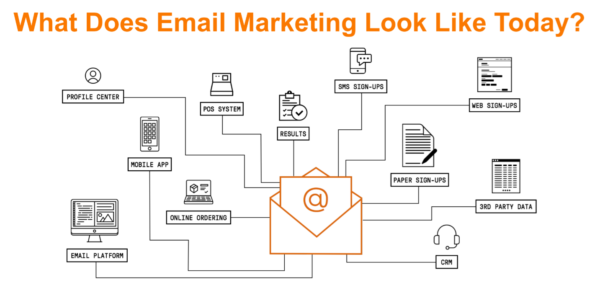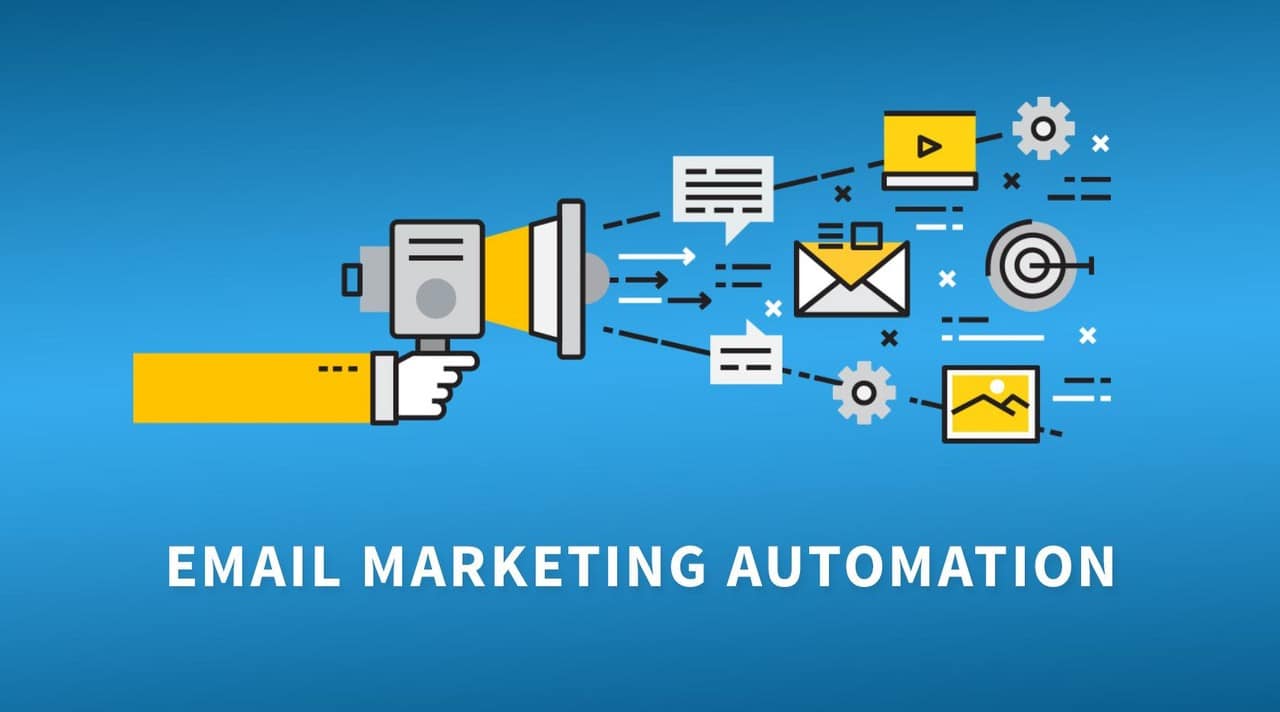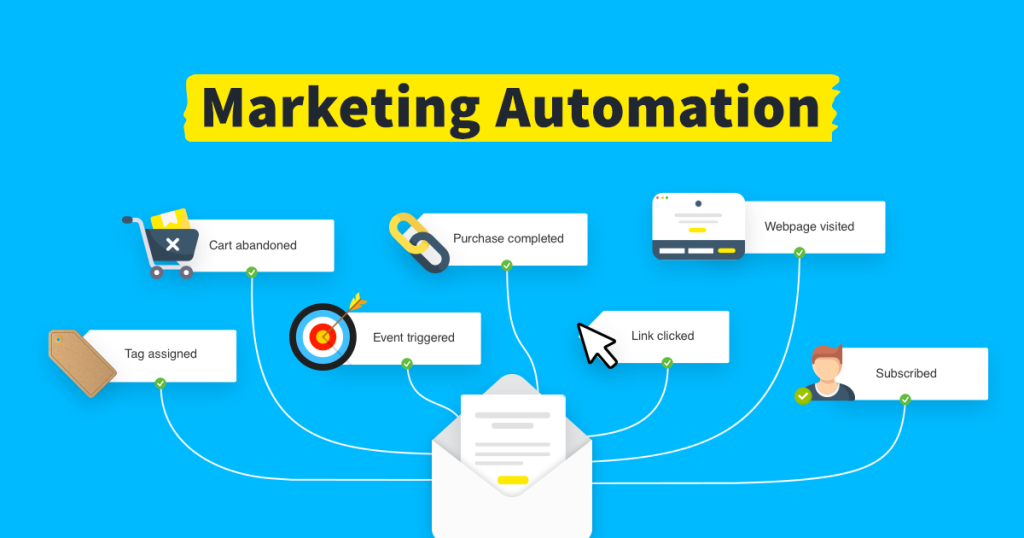Email marketing automation is a powerful tool for businesses. It helps send personalized emails automatically.
This saves time and increases efficiency. In today’s digital world, connecting with customers is essential. Email marketing automation makes this easier by sending targeted messages at the right time. Imagine not having to manually send each email. Instead, an automated system does it for you.
This means more time to focus on other important tasks. You’ll reach your audience more effectively and grow your business. Let’s explore what email marketing automation is and how it can benefit you.

Credit: contentmarketinginstitute.com
Introduction To Email Marketing Automation
Email marketing automation helps businesses send emails to customers automatically. It saves time and ensures timely communication. This technique uses software to handle repetitive tasks.
Email marketing automation helps businesses communicate with their audience efficiently. Automating email tasks saves time and ensures timely, relevant messages. It’s a powerful tool for marketers.Definition And Basics
Email marketing automation involves using software to send emails automatically. These emails are triggered by specific actions or timelines. For example, a user signing up for a newsletter receives a welcome email. This process is automatic. Marketers set rules and conditions for each automated email. Automation helps in managing large email lists. It ensures personalized communication with each subscriber. This increases engagement and builds stronger relationships.Importance In Modern Marketing
In today’s fast-paced world, timely communication is crucial. Email automation makes this possible. It allows businesses to stay connected with their audience effortlessly. Automated emails can nurture leads, welcome new subscribers, and remind customers of abandoned carts. Personalized messages improve customer experience. They make subscribers feel valued. This boosts brand loyalty and increases sales. Marketers can track email performance easily. They can see which emails work best and refine their strategies. This leads to better results and higher returns on investment. “`
Credit: www.designingit.com
Key Benefits
Email marketing automation offers many advantages. It allows businesses to send targeted messages without manual effort. Let’s explore the key benefits.
Time Savings
Email automation saves time by sending messages automatically. You set up the system once, and it works for you. This allows you to focus on other tasks. No more manual sending of each email. It reduces repetitive work.
Personalization
Automation allows you to personalize messages. You can tailor emails based on customer behavior. This makes the content relevant to each recipient. Personalized emails often lead to better responses. They show customers you understand their needs.
Improved Engagement
Engaging your audience becomes easier with automation. You can schedule emails for the best times. Automated emails keep your audience interested. Regular contact helps maintain a relationship. It increases the chances of conversion.
How It Works
Email marketing automation sends emails automatically based on user actions or schedules. It saves time and personalizes communication. This boosts engagement and efficiency.
Email marketing automation helps streamline your email campaigns. It saves time and enhances efficiency. But how does it work?Automation Tools
Automation tools manage and streamline your email marketing tasks. They allow you to schedule emails. You can also segment your audience easily. These tools help create personalized email journeys for your subscribers.Trigger-based Emails
Trigger-based emails are sent automatically. They are based on specific actions. For example, a welcome email when someone subscribes. Or a cart abandonment email when someone leaves items in their cart. These emails keep your audience engaged. And they often lead to higher conversion rates. “`
Credit: www.linkedin.com
Setting Up An Automated Campaign
Automated email campaigns simplify marketing by sending personalized messages to your audience at the right time. Email marketing automation saves time and increases engagement through targeted communication.
Setting up an automated email campaign can save you time and increase engagement. It allows you to send the right messages at the right time. Let’s explore the steps to set up an effective campaign.Choosing The Right Platform
First, choose a platform that suits your needs. Many email marketing tools offer automation features. Look for one with a user-friendly interface and good customer support. Some popular options include Mailchimp, HubSpot, and ActiveCampaign.Creating A Strategy
Next, develop a clear strategy. Identify your goals. Do you want to nurture leads, welcome new subscribers, or promote products? Outline the steps needed to achieve these goals. Plan the content and timing of your emails. Consider using triggers, such as sign-ups or purchases, to send relevant messages. Break your strategy into manageable tasks. Write engaging subject lines. Craft compelling messages. Use images and links to enhance your emails. Test your emails before launching the campaign. This ensures everything works as planned. With these steps, setting up an automated email campaign becomes more straightforward. Start simple. Learn and adjust your strategy as needed. “`Best Practices
Email marketing automation helps streamline your campaigns. It boosts efficiency and engagement. Following best practices ensures you get the most out of your efforts.
Segmentation
Segmentation divides your email list into smaller groups. These groups share common traits. For example, age, location, or interests. Tailor your messages to each group. This increases relevance and engagement. Use data to identify segments. Update segments regularly. This keeps your emails targeted and effective.
A/b Testing
A/B testing compares two versions of an email. It helps determine what works best. Test subject lines, content, and call-to-action buttons. Use small samples of your list for testing. Analyze results to find the winning version. Implement the best version for the rest of your list. This improves open rates and conversions.
Challenges And Solutions
Email marketing automation streamlines communication with your audience. It can save time and increase efficiency. But, it also comes with its own set of challenges. This section explores common pitfalls and solutions to help you navigate these hurdles effectively.
Common Pitfalls
One common pitfall is poor segmentation. Sending the same email to everyone can reduce engagement. Another issue is neglecting to update your email list. Outdated contacts can lead to high bounce rates. Lack of personalization is another problem. Generic emails often fail to capture interest.
Another pitfall is overloading your audience. Too many emails can lead to unsubscribes. Inconsistent branding can confuse your recipients. If your emails don’t match your website, it can reduce trust. Lastly, ignoring analytics can be a major mistake. Without data, it’s hard to know what’s working.
Overcoming Obstacles
To overcome poor segmentation, use detailed criteria. Group your contacts based on behavior, location, or preferences. Regularly update your email list. Remove inactive contacts to maintain a healthy list. Personalization is key. Use names and tailor content to individual interests.
Avoid overwhelming your audience. Find a balance in your email frequency. Ensure your branding is consistent. Match your emails with your website’s look and feel. Pay attention to analytics. Track open rates, click-through rates, and conversions. Use this data to refine your strategy and improve results.
Real-world Examples
Email marketing automation is a powerful tool. It helps businesses streamline their marketing efforts. By automating tasks, companies can save time and reach their audience effectively. But how does it work in the real world? Let’s explore some real-world examples of email marketing automation.
Successful Campaigns
Many businesses have benefited from email marketing automation. Here are a few successful campaigns:
- Netflix: Netflix uses automated emails to engage users. They send personalized recommendations based on viewing history.
- Amazon: Amazon’s automation strategy includes follow-up emails. They send emails after a purchase suggesting related products.
- Spotify: Spotify sends automated emails to re-engage users. They offer personalized playlists and reminders to inactive users.
These examples show the power of email automation. Companies can connect with customers in a personalized way. This leads to increased engagement and loyalty.
Case Studies
Real-world case studies provide deeper insights into email marketing automation. Here are a few noteworthy examples:
| Company | Strategy | Outcome |
|---|---|---|
| Uber | Automated welcome emails for new users. | Increased user engagement by 20%. |
| Airbnb | Personalized email reminders for abandoned bookings. | Recovered 15% of abandoned bookings. |
| Zappos | Automated follow-up emails for customer feedback. | Improved customer satisfaction by 30%. |
These case studies highlight the effectiveness of email automation. By targeting specific user behaviors, companies can drive better results.
Future Of Email Marketing Automation
The future of Email Marketing Automation is exciting and full of potential. Businesses are constantly seeking ways to improve their communication with customers. Email marketing automation is a key tool in achieving this goal. As technology advances, new trends and innovations are emerging. These will shape the future of email marketing automation, making it more efficient and effective.
Emerging Trends
New trends are shaping the future of email marketing automation. One major trend is the use of AI and machine learning. These technologies help create more personalized and relevant content. They can analyze customer behavior and predict future actions. This allows businesses to send targeted emails, increasing engagement and conversion rates.
Another trend is the integration of social media. Marketers are combining email marketing with social media campaigns. This creates a seamless experience for customers. They can engage with brands across multiple platforms. It also allows marketers to gather more data, improving their strategies.
Interactive emails are also becoming popular. These emails include features like polls, quizzes, and videos. They engage recipients and encourage interaction. This leads to higher open and click-through rates.
Technological Advancements
Technological advancements are driving the future of email marketing automation. One of the key developments is advanced segmentation. This allows marketers to segment their audience based on various criteria. These criteria include demographics, behavior, and preferences. This ensures that the right message reaches the right person at the right time.
Automated workflows are also becoming more sophisticated. They can now handle complex tasks and processes. This includes sending follow-up emails, nurturing leads, and re-engaging inactive subscribers. These workflows save time and resources while improving efficiency.
Another significant advancement is the use of dynamic content. This allows marketers to create emails that change based on the recipient’s data. For example, a retail business can show different products to different customers based on their past purchases. This increases the relevance and effectiveness of the emails.
Finally, the rise of mobile optimization is crucial. More people are checking their emails on mobile devices. Marketers must ensure their emails are mobile-friendly. This means responsive design, easy-to-read text, and clear calls to action.
By staying updated with emerging trends and technological advancements, businesses can harness the full potential of email marketing automation. This will lead to better customer engagement, higher conversion rates, and improved ROI.
Frequently Asked Questions
What Is Email Marketing Automation?
Email marketing automation is the use of software to send targeted emails automatically. It helps streamline marketing efforts, saving time and increasing efficiency.
How Does Email Marketing Automation Work?
Email marketing automation works by using predefined triggers and workflows. It sends emails based on user actions, behavior, or specific time intervals.
Why Is Email Marketing Automation Important?
Email marketing automation is important because it improves engagement, boosts conversions, and enhances customer experience. It also saves time by automating repetitive tasks.
What Are The Benefits Of Email Marketing Automation?
The benefits of email marketing automation include increased efficiency, better targeting, higher engagement, and improved ROI. It also allows for personalized customer interactions.
Conclusion
Email marketing automation streamlines your marketing efforts. It saves time and boosts efficiency. With automated tools, you can send timely, personalized emails. This leads to better engagement and higher conversion rates. Small businesses and large enterprises both benefit greatly. Start leveraging email marketing automation today.
It’s a simple way to grow your business. Remember to continuously monitor and adjust your strategies. This ensures optimal results and consistent improvement. Happy emailing!




